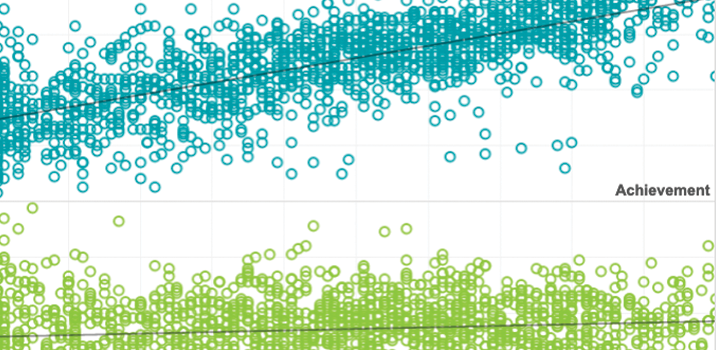High-growth schools & practices
Across the country, some schools stand out for creating high growth for the students they serve. This research explores the characteristics of these schools and the strategies and practices that drive their success.


Finding root causes effectively: A powerful way to improve schools
Using experience gained by facilitating the determination of root causes in schools and in industrial settings, as well as lessons from research and literature both within and outside of education, this paper provides a recommend process, and detailed protocols and tools for defining problems to be investigated and determining their root causes.
By: Andrew Hegedus
Topics: High-growth schools & practices


Do high flyers maintain their altitude?
In the visualizations in this exhibit, you can compare the performance and growth of various groups of high achievers to that of their peers over multiple years.
By: Yun Xiang, Michael Dahlin, John Cronin, Robert Theaker, Sarah Durant
Topics: Equity, High-growth schools & practices


Moving from data to making a difference
The problems faced within education resemble the problems in many social settings in that they lack clear definitions, have many potential causes, lack simple solutions, and defy straightforward measurement. In this article, Andrew Hegedus shares a view on the types of problems faced in education and outlines key characteristics of a process that begins with collecting data and ends with evaluating progress.
By: Andrew Hegedus
Topics: Empowering educators, High school, High-growth schools & practices


Do high flyers maintain their altitude? Performance trends of top students
In this study from the Thomas B. Fordham Institute, achievement trends from NWEA’s longitudinal growth database were used to track students who scored at or above the 90th percentile on this assessment in order to see if they maintained their high achievement.
By: Yun Xiang, Michael Dahlin, John Cronin, Robert Theaker, Sarah Durant
Topics: Equity, High-growth schools & practices


Making teacher goal setting more powerful
Most of us believe that when individuals have goals, their performance improves, and this belief is being put to the test in schools today. In an effort to create alignment between district and school improvement efforts, teachers are more likely than ever to have formal performance goals.
By: Andrew Hegedus
Topics: Empowering educators, High-growth schools & practices


Seven successful strategies for literate assessment
Evidence that suggests principals’ knowledge and skills in relation to assessment leadership—such as incorporating professional development, use of assessment data in classroom planning, and nurturing professional collaboration on matters of student achievement and instruction—are of fundamental importance to building assessment literacy among their teachers.
By: Beth Tarasawa, Amelia Wenk Gotwals, Cara Jackson
Topics: Empowering educators, High-growth schools & practices


Evaluating the relationships between poverty and school performance
This study examined the relationships between poverty and a school’s academic performance (both student achievement and growth). Educators, advocates, and policymakers can use these data to shape how people look at the performance of schools in their communities and to inform education policy (e.g., the effect of evaluating schools based on achievement vs. growth).
By: Andrew Hegedus
Topics: Equity, High-growth schools & practices


